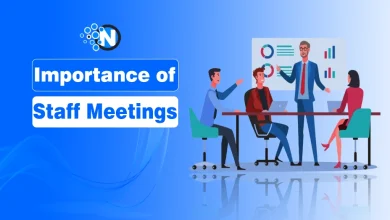5 IT Challenges Every Business Faces (and How to Solve Them)

Staying afloat in business requires careful planning, strict budgeting, and hard work, but even the most well-oiled machine can hit a snag when it comes to technology. From security breaches to software outages, IT problems can cause serious disruptions for businesses of all sizes. The good news is, there are solutions to even the most complex IT challenges. Here are five of the most common IT problems businesses face, and how to solve them.
1. Security breaches
No business is immune to security threats, but small businesses are particularly vulnerable. In 2018, 43% of cyber attacks targeted small businesses, and smaller companies are the ones that might not have the resources to recover from an attack.
The best way to protect your business from a security breach is to proactively address potential vulnerabilities. This means investing in a robust security system, encrypting sensitive data, and educating your employees on best practices for cybersecurity. A few other things you can do to protect your business from a security breach:
- Use a firewall to protect your network
- Install antivirus software on all devices
- Create strong passwords and change them regularly
- Monitor your network for unusual activity, and if you do experience a security breach, act quickly to contain the damage.
You should also use a CDN on your website for an extra layer of protection. Not only will this improve your SEO ranking and speed up your website, but it will also protect your site from attacks.
2. Software outages
Even the most reliable software can experience an outage, and when it does, it can bring your business to a screeching halt. That’s why it’s so important to have a plan in place for how to deal with software outages when they occur. A few of the main reasons software outages happen include:
- Bugs in the code
- Compatibility issues
- Lack of resources
- Poorly written code
When a software outage does occur, the first thing you should do is contact the software vendor and report the issue. They may be able to provide you with a patch or workaround until the problem can be properly fixed.
Managed IT services can also help you recover from a software outage quickly and efficiently. Managed service providers will have a team of IT experts on call who can troubleshoot the problem and get your systems up and running again.
Depending on the severity of the outage, you may also need to provide your employees with workarounds or alternate methods for completing their tasks. For example, if your email server is down, you might give employees instructions on how to send emails using their personal accounts.

3. Data loss
Data loss is one of the most feared IT problems. Losing critical data can be devastating for a business, and it can take months or even years to recover. In some cases, data loss may only comprise a few SKUs or some marketing data. In other cases, data loss can be much more severe—resulting in the loss of customer records, financial data, or even proprietary information.
The best way to prevent data loss is to have a robust backup and disaster recovery plan in place. This means backing up your data regularly and storing backups off-site in a secure location. In the event of data loss, you’ll be able to quickly and easily retrieve your backup files and get your business up and running again. Protecting yourself from data loss also requires you to have a robust cybersecurity team that can identify and fix potential vulnerabilities.
4. Downtime
Downtime is when your systems are unavailable or unusable, and it can have a serious impact on your business. Even a few minutes of downtime can cause lost productivity, missed opportunities, and frustrated customers. A few causes of downtime include:
- Power outages
- Network outages
- Server failures
- Application crashes
- Human error
Downtime can often be prevented by investing in redundant systems and having a robust backup and disaster recovery plan. Redundant systems provide a backup in the event of a failure, and they can help keep your business up and running even if one system goes down.
Your plan should also include things like having a backup server, using cloud-based applications and using a managed IT service. You should also invest in redundancy and high-availability solutions to further reduce the impacts of downtime.
5. Compliance issues
If your business deals with sensitive data, you need to be sure that you’re in compliance with all relevant laws and regulations. Failure to comply can result in hefty fines, damage to your reputation, and even jail time.
There are a number of compliance issues that businesses need to be aware of, including the General Data Protection Regulation (GDPR) in the EU, the Health Insurance Portability and Accountability Act (HIPAA) in the US, and the Payment Card Industry Data Security Standard (PCI DSS).
Other compliance issues to be aware of include the Sarbanes-Oxley Act (SOX), the Gramm-Leach-Bliley Act (GLBA), and the EU data privacy laws. Particularly if you do business internationally, it’s important to be up-to-date on all relevant compliance issues.
To ensure compliance, you need to have a strong understanding of the relevant laws and regulations. You should also put policies and procedures in place to protect sensitive data.On top of this, having a dedicated team or company employee who is responsible for compliance can help ensure that your business is always up-to-date on the latest news and issues.
If you don’t have the budget or infrastructure for a dedicated compliance manager, you might also consider working with a compliance consultant to help you ensure that your business complies with all relevant laws. There are also software solutions that can help you automate compliance-related tasks, such as data encryption and user access control.
Endnote
Running a business is hard enough without having to worry about IT problems. By being aware of the most common IT challenges and taking steps to prevent them, you can minimize the impact of these problems on your business.




